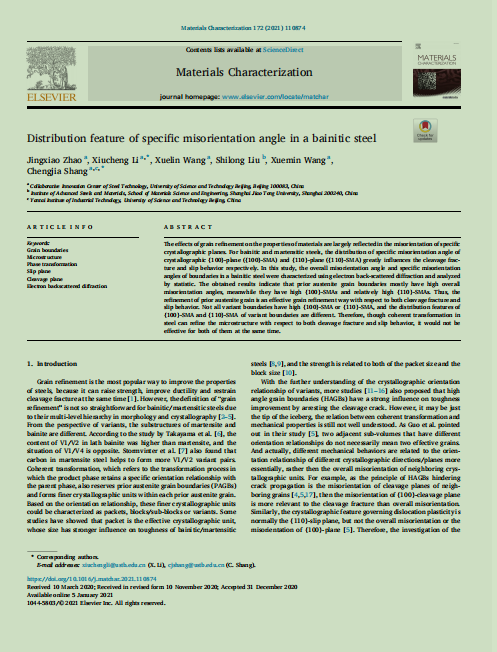The effects of grain refinement on the properties of materials are largely reflected in the misorientation of specific crystallographic planes. For bainitic and martensitic steels, the distribution of specific misorientation angle of crystallographic {100}-plane ({100}-SMA) and {110}-plane ({110}-SMA) greatly influences the cleavage fracture and slip behavior respectively. In this study, the overall misorientation angle and specific misorientation angles of boundaries in a bainitic steel were characterized using electron back-scattered diffraction and analyzed by statistic. The obtained results indicate that prior austenite grain boundaries mostly have high overall misorientation angles, meanwhile they have high {100}-SMAs and relatively high {110}-SMAs. Thus, the refinement of prior austenite grain is an effective grain refinement way with respect to both cleavage fracture and slip behavior. Not all variant boundaries have high {100}-SMA or {110}-SMA, and the distribution features of {100}-SMA and {110}-SMA of variant boundaries are different. Therefore, though coherent transformation in steel can refine the microstructure with respect to both cleavage fracture and slip behavior, it would not be effective for both of them at the same time.
